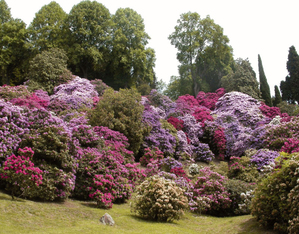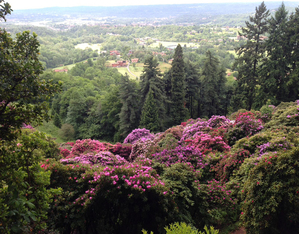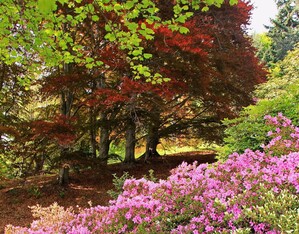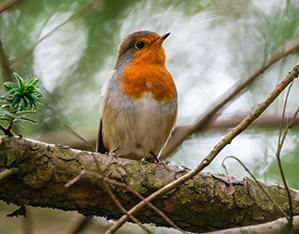Resembling a vast natural landscape, this park is actually the result of a human design harmoniously blending into the territory. The beauty of Parco Burcina stems from its balanced mix of lawns, woods, clearings, small rural outbuildings, and abundant flowerings, in particular that of rhododendrons in a natural dip in the ground called the Conca dei rododendri.
The parc was initiated in 1890 when Felice Piacenza bought the land and began outlining its pathways, creating the ponds, and planting the cultivations in the lower part of the hill. His father, industrialist Giovanni Piacenza specialising in the wool industry of the area around Biella, had purchased the very first pieces of land with the idea of creating a botanical park. It was at this stage that a number of sequoias were planted in 1848. A crucial turning point was the introduction of about one thousand rhododendrons, listed as “large flower hybrids”, in a natural dip in the ground. This rhododendron collection, considered Europe’s finest, is based on specimen imported from the north of France and Belgium. The area was bought in 1934 by the Municipality of Biella, who can be credited for the extension of the pathway network, the new bridge access across Rio Vandorba – designed by Pietro Porcinai and realized in the 1950s – and the introduction of Leonardo Bistolfi’s bust portraying Felice Piacenza. With its rich fauna, with dozens of animal and bird species, the park stretches for 57 hectares with a rich tree population including beeches, oaks, chestnuts, maples, rowan trees, birches as well as many conifers, including monumental sequoias, pines, firs, cedars, cypresses, thujas and tsugas. There are also typical Mediterranean trees and shrubs such as holm oaks, cork oaks, olive trees, rockroses, myrtles and strawberry trees. The Parco Burcina Special Natural Reserve was founded in 1980 and today it is part of the Riserve Pedemontane e delle Terre d’Acqua authority.





